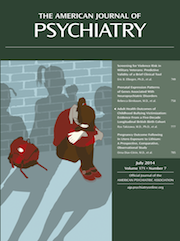Treatment of Separation, Generalized, and Social Anxiety Disorders in Youths
Abstract
Separation, generalized, and social anxiety disorders are common and impairing for children and adolescents. Childhood-onset anxiety disorders frequently persist into adulthood and place youths at risk for future psychiatric disorders, including mood and substance use disorders. Comorbidity is common in childhood anxiety disorders, and studies increasingly take this into account when assessing potential treatments. Existing studies support a number of pharmacological and psychotherapeutic treatments for childhood anxiety disorders. The strongest evidence supports use of selective serotonin reuptake inhibitors (SSRIs) and cognitive-behavioral therapy (CBT). Combination treatment with SSRIs and CBT has been found to be more effective than either treatment alone. Early detection and treatment of childhood anxiety disorders can prevent substantial impairment over the course of a child’s development and accumulation of functional disability. Early treatment also may prevent later development of adult psychiatric illness. The authors review the treatment literature and present the case of an adolescent who is brought in for evaluation after years of untreated anxiety.



